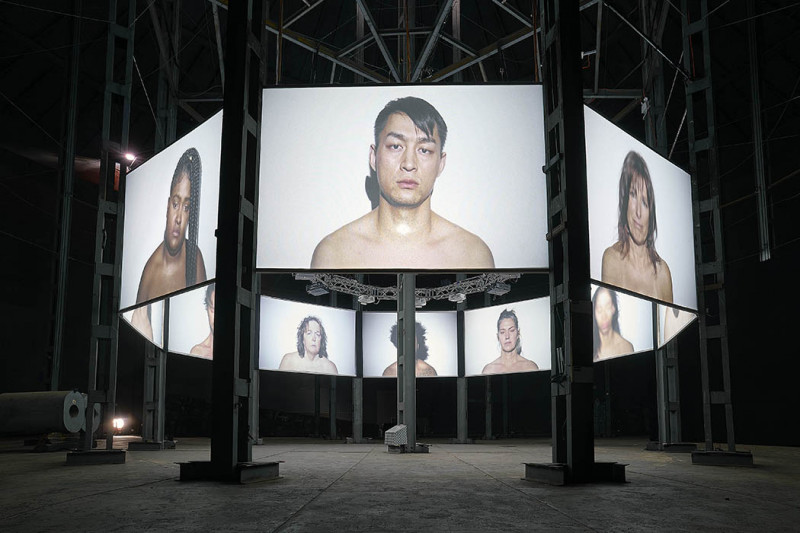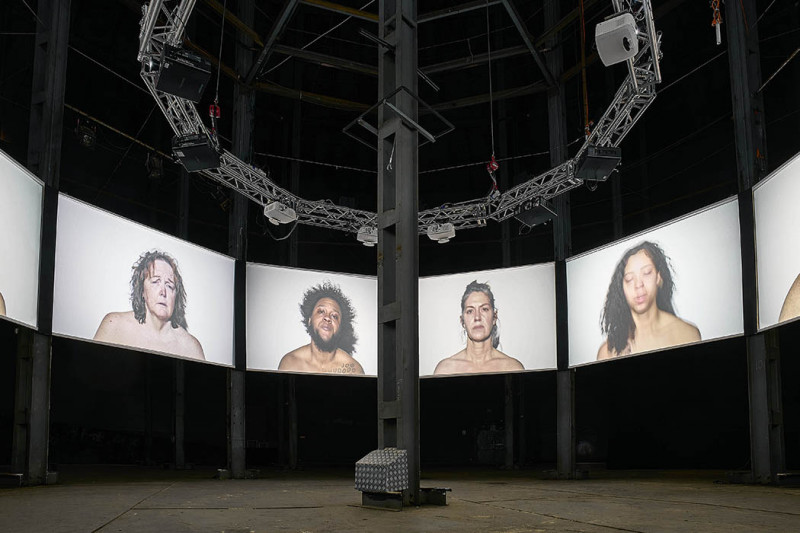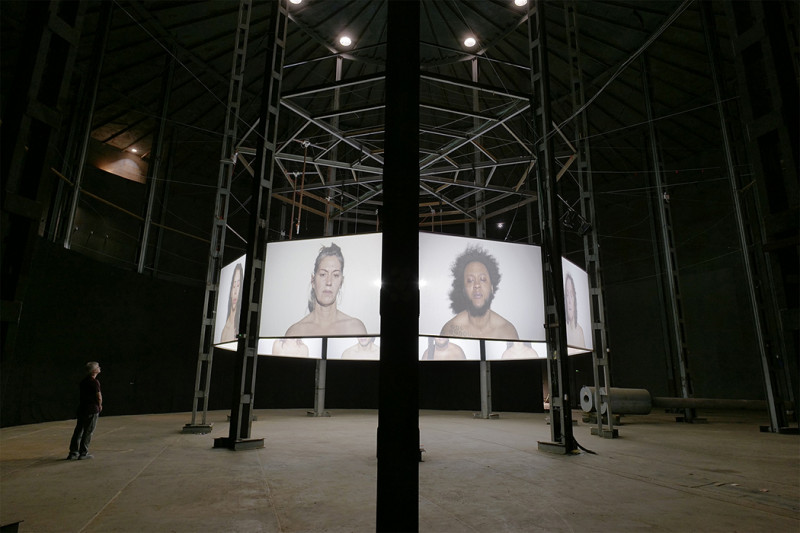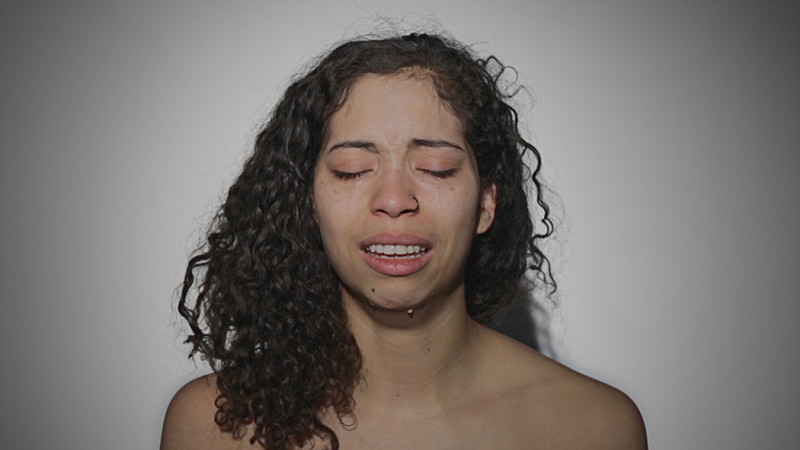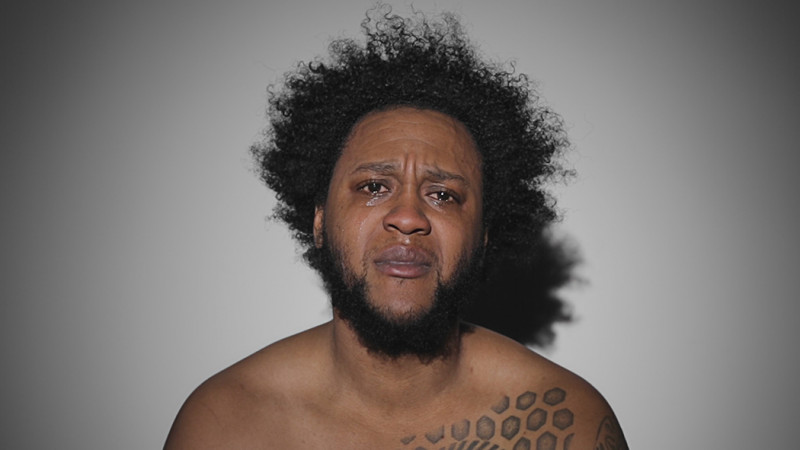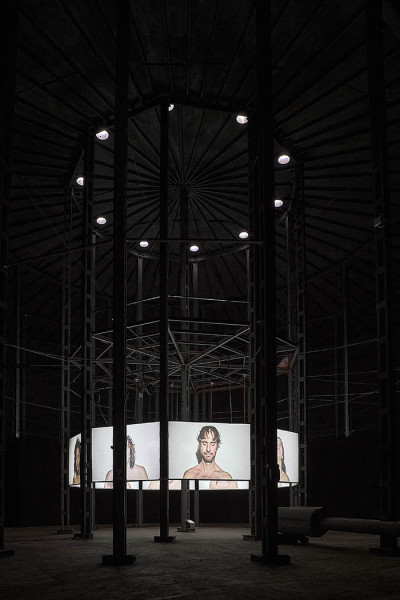Yapci Ramos
Lloro, 2021
Few emotions elicit as much violence and empathy as crying. This is demonstrated by Lloro, the new video installation by the artist Yapci Ramos, inaugurated at the top of Espacio Cultural El Tanque, in Santa Cruz de Tenerife, as an altar that elevates our fragility to the antipodes of the social taboo that still weighs on the different manifestations of the intimate. Its spherical multi-screen format completes a circular journey like life around a mosaic of tears projected as fragments of a mirror that cracks in our eyes, because the artist’s proposal places us on the edge of the wound where we break and, therefore end, we are.
In reality, the crying that challenges us and makes us uncomfortable is always that of others. And yet we cannot stop looking, perhaps because that vertigo contains the desire to fall or the intuition that catharsis can also be the place of the possible. The mirrors of art: once again, Yapci and the mirrors, Yapci before the others to revive in the pronouns. But Lloro, unlike previous titles of her work, such as Show Me or Know Us, is conjugated in the first person of the shared singular, because the artist looks at the camera from the front through a curtain of tears to found a collective ritual of crumbling and purification, where she embarks other anonymous faces in close-up shots that place the most private self in the public exhibition space. This ceremony of the right – and the duty – to collapse illuminates what the imperative of easy encouragement and constant happiness inhibits in social discourse: pain, loneliness, despair. Look inside, jump, listen, open up. And be reborn.
Through cycles and circles, the artist has already traveled these everyday dim paths through video art on numerous occasions, such as in I Don’t Mind II project, where the sound section of this piece on enjoyment, conceived as the underside of Lloro, it is made up of the orgasms and moans of its participants, or in Red-Hot, where she writes her doubts and questions with her menstrual blood on the white wall. The Basque artist Esther Ferrer says that “performance is either life or it is nothing”. However, the images of Lloro and her predecessors do not constitute representations, but rather a powerful artistic invitation to reconcile ourselves from otherness and free ourselves in that exact place where fear contains us.
At the end of the return trip to the beginning of the circumference, where we are no longer the same ones who started this way inwards, the feeling is one of communion and relief after leaving the darkness of this room, reminiscent of Plato’s cave. Suddenly, we are the water against the anguish and the fears that we bleed in silence and we are the song of the bird that escapes from the cage and flies in a less distant place, much closer to itself. A little more free.
Rebirthing Ritual, an essay by Nora Navarro.
Lloro was created at the Watermill Center, February 2020, New York.
